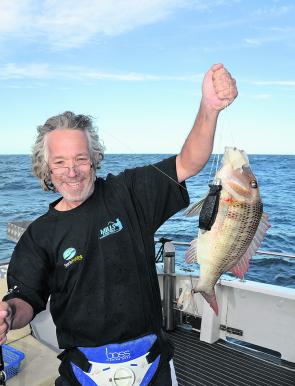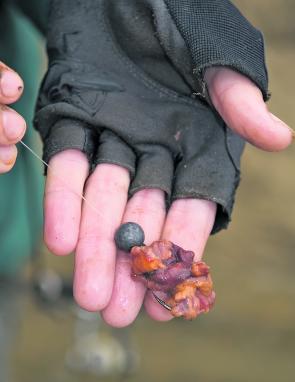Correct sinker selection can be critical to success in many forms of fishing. Starlo explains why, and stresses the importance of lightening up wherever possible.
Sinkers are weights made from lead, lead-alloys or other heavy materials. Most sinkers include either a hole or channel through the middle, or an eyelet or ring on the end to hold the line. Shot or split shot are generally smaller versions with a slot or split on one side, allowing the line to be inserted before the shot is squeezed shut to grip the line (and please use pliers for this task, not your teeth!).
We add sinkers or shot to our fishing lines and terminal rigs for a number of important reasons. The most obvious uses for sinkers are to provide additional weight to aid in casting, to carry a rigged line and bait (or lure) down towards the bottom and then hold our rig at a desired level in the water column, and also to balance or ballast a float so that its movement clearly indicates bites without scaring away timidly nibbling fish.
In almost all fishing scenarios, it’s really, really important to avoid thinking of sinkers as mini anchors!
Too many anglers still incorrectly believe that a sinker is designed to hold their rig and bait firmly in one place (usually right on the seabed) and to keep their line nice and tight, so that bites can be easily felt. The fact is, most bites are registered just as readily when the line is slightly slack, and far fewer fish will shy away from a bait that’s allowed to move a bit and waft about in a natural way, at the whim of the current and tide.
In nearly every fishing scenario you might care to nominate, the smallest sinker you can practically use under the prevailing conditions (depth, current and required casting distance) is far and away the best choice for the job at hand. In other words, this is one area of life where smaller is almost always better!
The actual shape and design of the sinker you choose is generally much less important than its weight. A sinker’s shape merely allows you to fine-tune your rig. However, a couple of shapes are designed for quite specialised functions and can definitely improve the performance of your rigs in these specific situations.
For most of our day-to-day fishing needs ball, bean, bug and barrel sinkers are ideal. The performance of each of these common styles of sinker is so similar that you can pick whichever shape appeals the most to you on a personal level. They’ll all do the job admirably.
As well as these common sinkers, the following two styles have useful applications in certain forms of fishing:
Snapper lead: This type of sinker (also known as a bomb sinker) is designed to sink fast, straight and without spinning, or to travel through the air with little wind resistance, making the snapper lead extremely suited to deep-water bottom fishing or long-distance, shore-based casting.
Star and helmet sinkers: These are designed to have excellent grip on sandy sea beds, especially when strong cross currents are flowing, making these styles useful for surf fishing, especially on rougher days.
Other specialist sinkers that were quite popular in years gone by seem to have less relevance to modern angling and have slowly faded from use. Spoon sinkers, for example, have largely gone out of favour with modern anglers, despite the fact that this design is quite useful for use over snaggy bottoms, simply because the sinker rides up over obstructions when retrieved quickly. Other unusual designs such as the channel sinker or so-called ‘picker’s doom’ have also declined in popularity, and are mostly only found in museum collections or pictured in old books these days.
Rather than focussing too much on obscure sinker shapes, concentrate instead on reducing your sinker weight whenever and wherever you can. Your catch rate will definitely improve as a result. In future instalments, we’ll look at rigging, and the relative merits of running versus fixed sinker rigs. Until then… lighten up!
Reads: 5846
Sinkers have a role to play in lure fishing, too. Note the ball sinker rigged in the leader loop knot on this weedless soft plastic, used to tempt a good barra.

Lots of charter operations wrap their heavy snapper-style leads or bombs in tape or rubber tubing to reduce damage to boat fittings as these projectiles swing around. In very deep water you may need a hefty sinker like this one to get your bait to the bot

A ball sinker running freely right down to the hook is a really useful and simple rig and will account for far more desirable captures than this unwanted kelpfish.

A cunjevoi bait rigged on a 1/0 hook for drummer, with the relatively small ball sinker running freely on the line right down to the knot. This is a killer rig!




